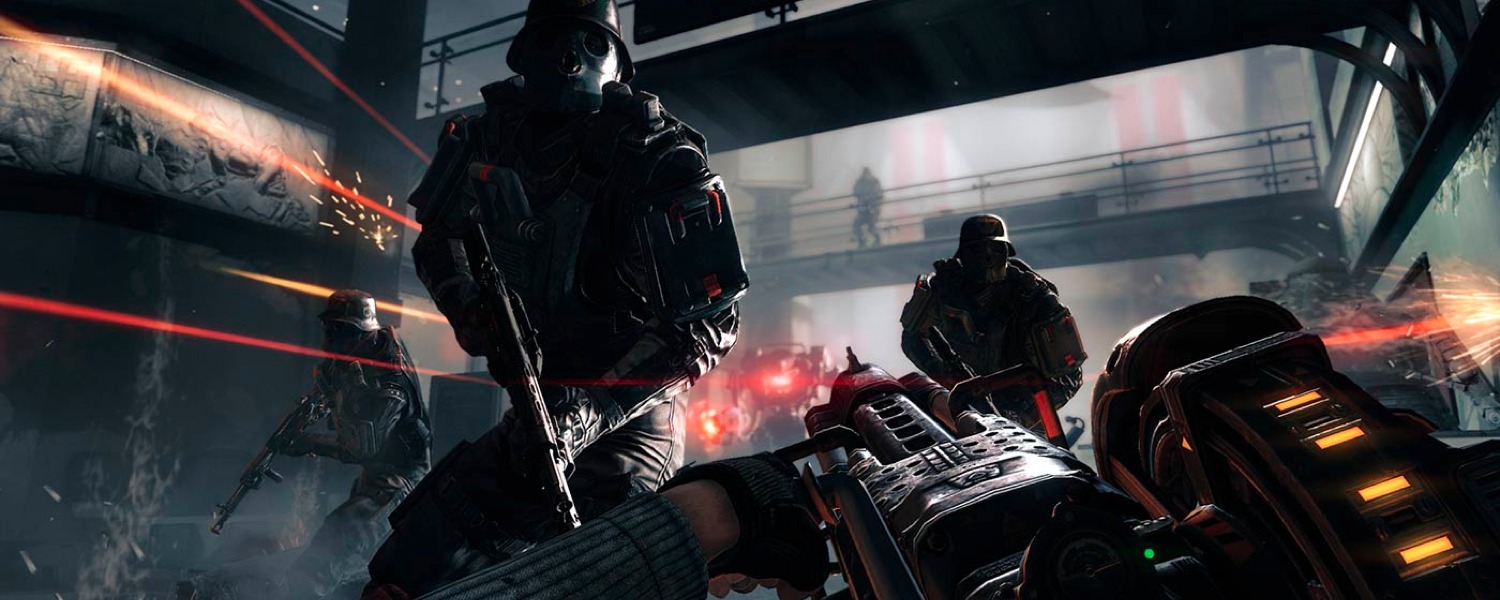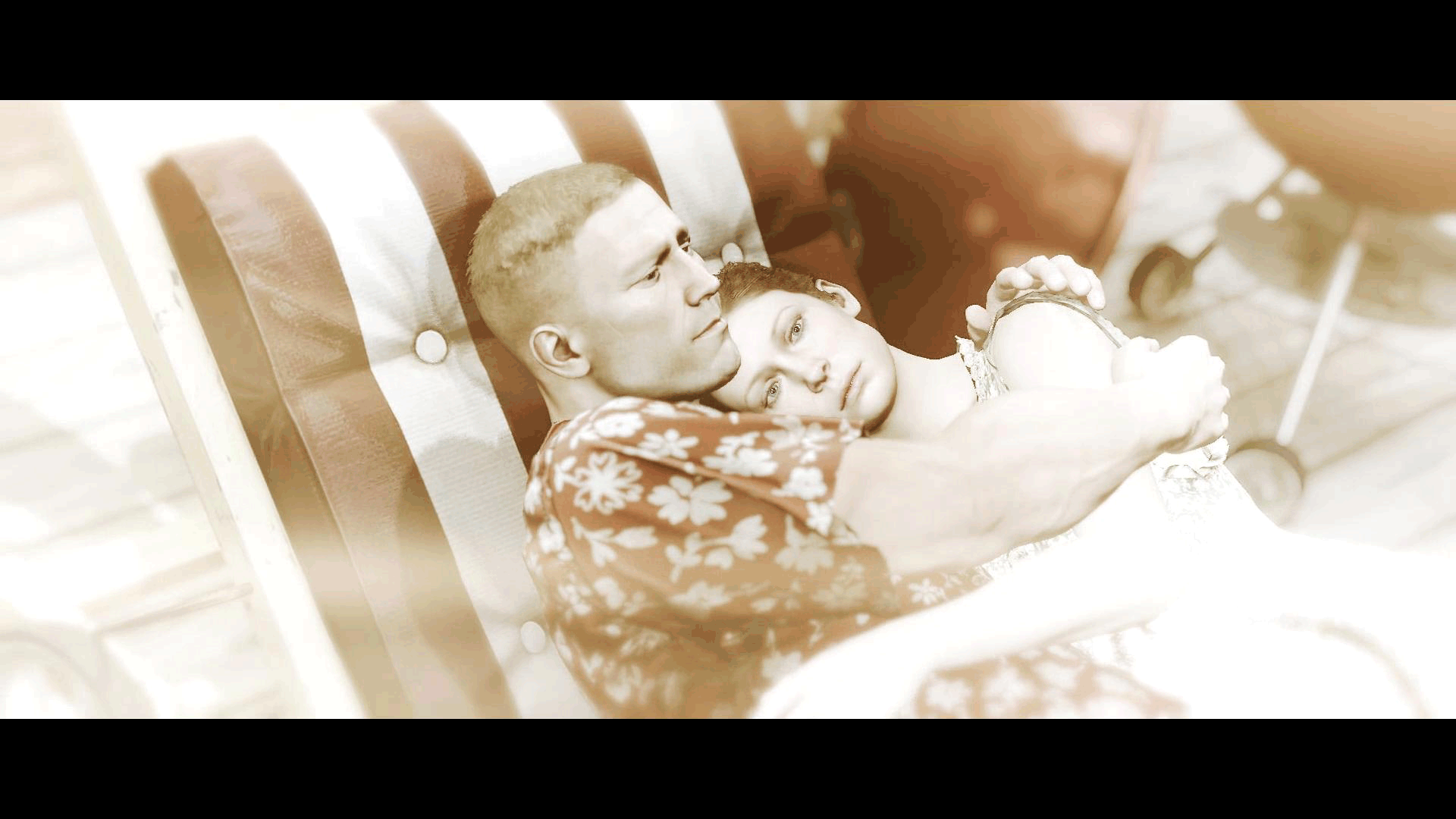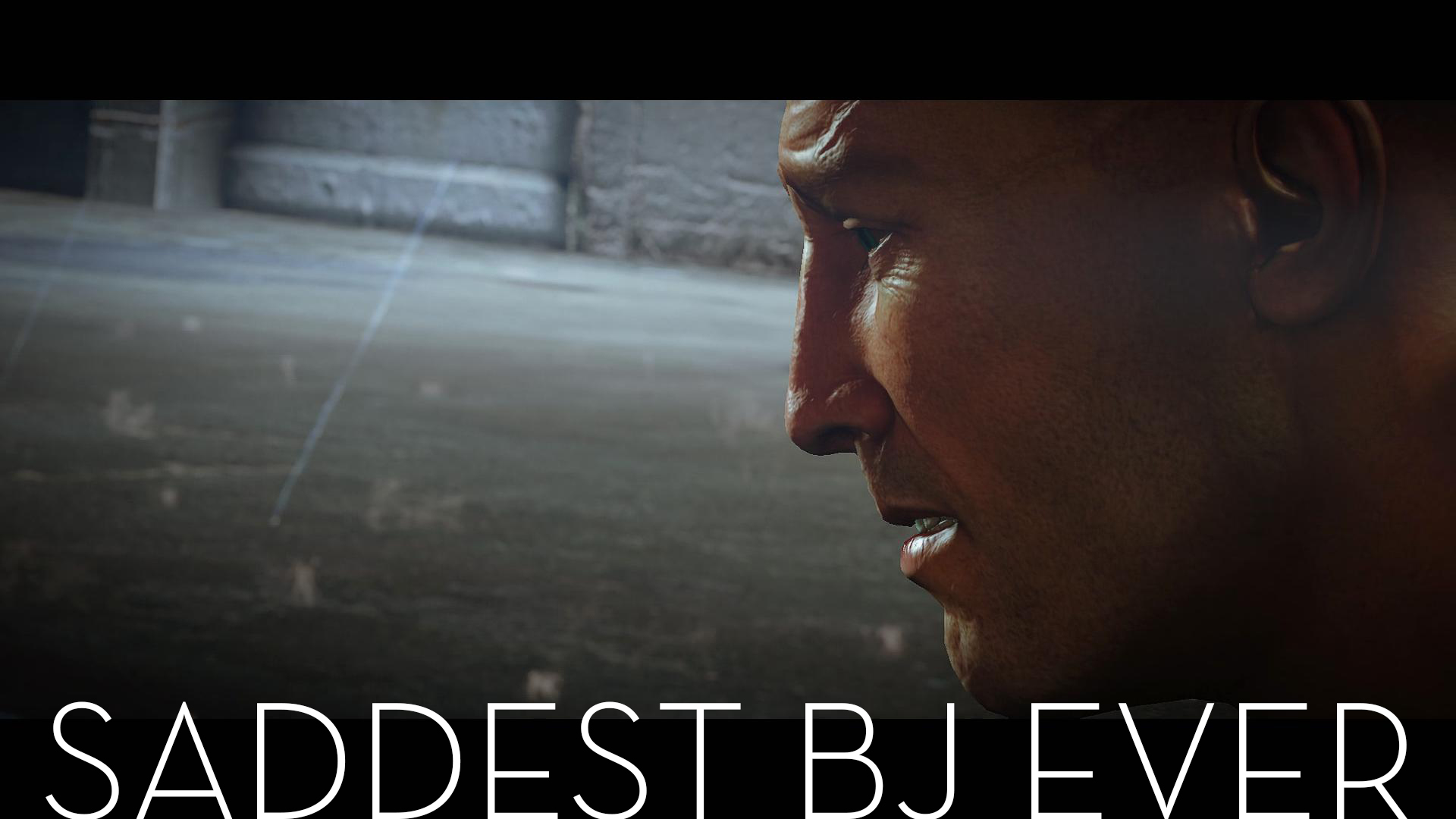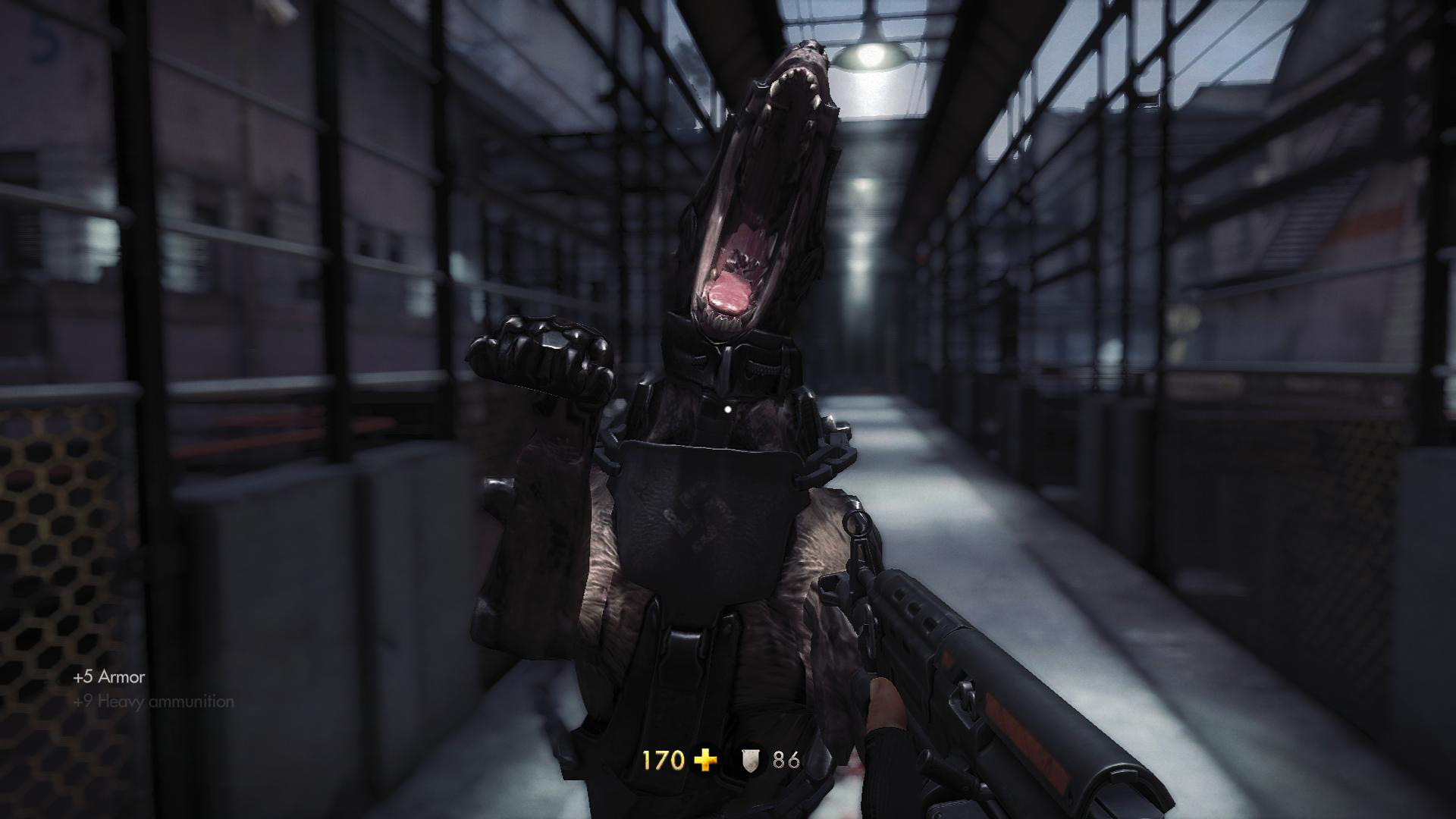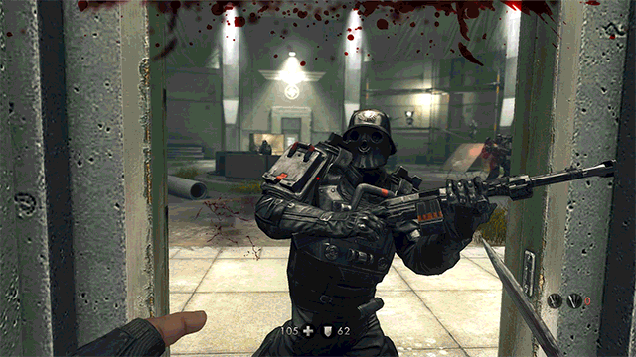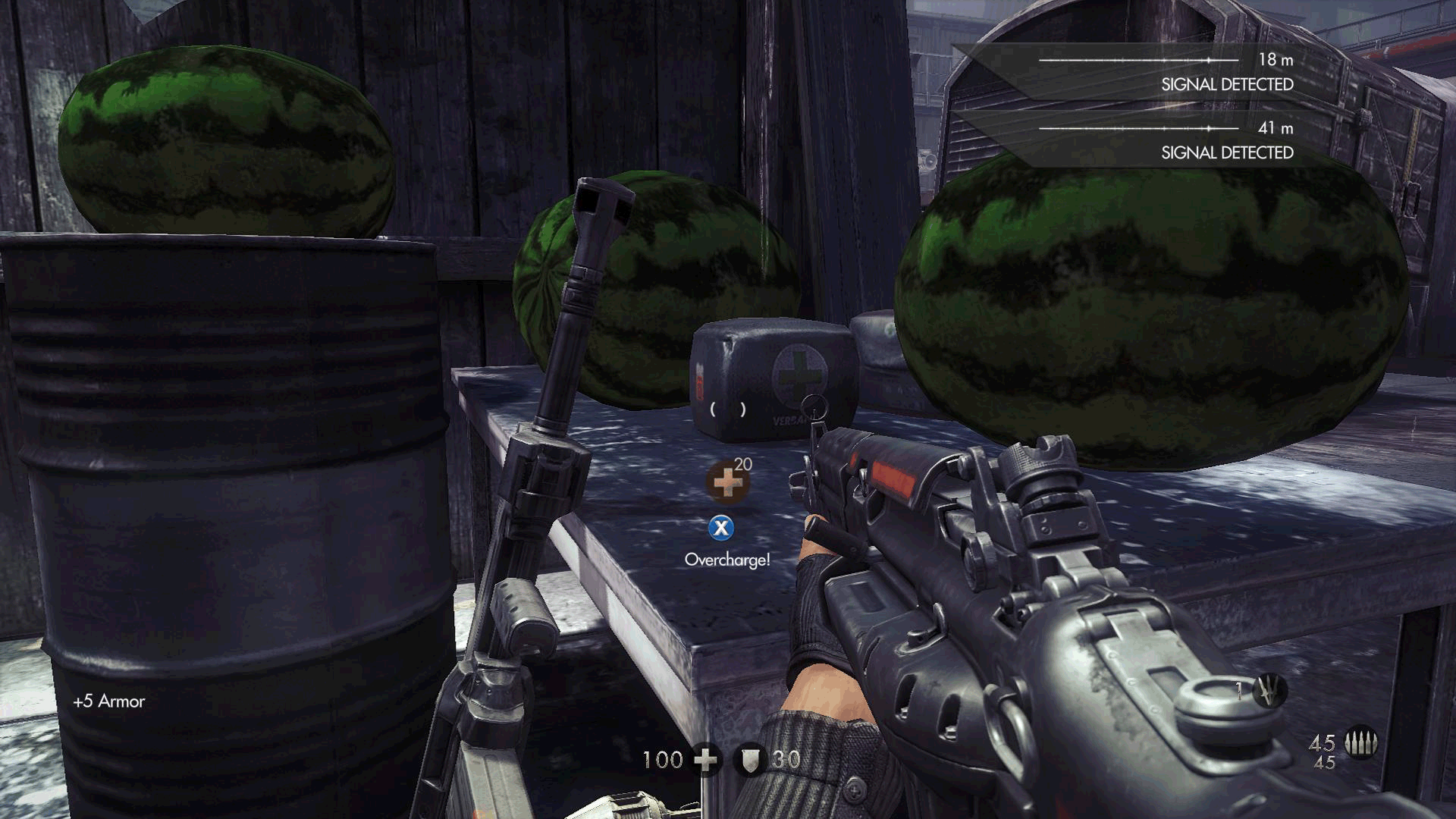
Not that killing Nazis isn't an important aspect of Wolfenstein: The New Order, the third entry in reboot of the classic first-person shooter series that began with 2001's Return to Castle Wolfenstein and continued in 2009's simply-titled Wolfenstein. Over the course of the 13 hour campaign I killed 795 of them --- 122 with headshots, 74 with knives, 59 with turrets. They died violently. They died screaming. One of them died dancing.
But all of them died for a reason --- a much deeper reason than in any Wolfenstein game prior. B.J. Blazkowicz was a killing machine whose sole purpose was preventing Nazi Germany from winning World War II at any cost. At the beginning of Wolfenstein: The New Order, he fails.
What does a man driven by singular purpose do when that purpose is stripped away? He spends 14 years in a Polish insane asylum, trapped inside his own body. Along the way, he falls in love with his nurse. Her name is Sally Purpose. *checks notes* Her name is Anya Oliwa, and she's the reason the grizzled super soldier doesn't just find a nice quiet place to live out the rest of his days, which is what I would do if I woke up after a decade and a half to discover the Nazis had taken over the world.
Well, first I'd probably undergo the months of physical therapy that would be necessary to condition myself back into fighting shape, but Wolfenstein: The New Order has no time for such frivolity. There are strong emotions to be elicited from players, and there's no time for logic when such a task is at hand.
Developer MachineGames wants to take its unique-ish alternate history setting and use it to tell a more human story than has ever been attempted in a Wolfenstein game. Based on the initial reaction of myself and fellow Kotaku writer Luke Plunkett, they're a bit too obvious about it.
Muffins Fahey: The shooting people is lovely. But the obvious attempts at injecting feelings into the story...
Luke P.: So stupid
HERE COME FEELINGS
OK NOW SHOOT LIGHTNING NAZI SOLDIERS AND ROBOT DOGS
Muffins Fahey: Shit, we forgot the feelings. Here comes last minute feelings guy!
Luke P.: OK GUYS I GOT THIS
WE CAN PUT FEELINGS HERE, HERE AND HERE
*applause*
you did it, feelings guy!
NO WE ALL DID IT
*FEELS*
New characters introduced just in time to die tragically, old war buddies now confined to wheelchairs, a ragtag band of misfits overcoming adversity and making a stand --- many of these ham-handed attempts at injecting emotion into a game about slaughtering Nazi robot dogs are laughably clumsy.
But there's a definite spark there. B.J.'s newfound love shows us a side of the Nazi slaughterman we've never really explored. We see him filled with remorse over an early-game choice. During slower moments we're privy to his innermost thoughts --- reflections on childhood traumas and dreams for the future. He's not quite three dimensional, but he's far more than a hand holding a gun.
That is much more than can be said for the series' returning villain, Wilhelm "Deathshead" Strasse. Back in a starring role as the living embodiment of evil after playing second fiddle to the supernatural horror of 2009's Wolfenstein, Deathshead (voiced in English by Dwight "Reginald Barclay" Schultz of Star Trek fame) proves technology's superiority once and for all by using it to capture the hearts and minds of the people. He then used those hearts and minds to power hideous death machines, which won the war. Also, he has a thing for robot dogs.
Deathshead's typical evil scientist shtick is particularly jarring in light of the amazing cast of characters MachineGames has assembled against him as B.J.'s backup band, the resistance movement. There's Caroline Becker, the movement's wheelchair-bound leader. Fergus Reid, wiry Scottish pilot with a penchant for colorful language. Set Roth, a Jewish scientist with a very particular area of expertise. Best of all there's Tekla --- dear, sweet Tekla --- an eccentric woman who steals every scene she participates in.
Wonderfully written and expertly voiced, these 'bit players' are some of the most interesting characters I've encountered in a video game. That so much effort was put into bringing them to life, even though some of them might not even appear in players' initial playthrough, depending on an important choice made early on in the game, is astounding.
In order to secure a future for his beloved Anya and follow the oft-moving story lines of the rest of the resistance to their satisfying conclusions, B.J. must defeat Deathshead once and for all. This involves performing completely impossible feats of shooting, stabbing and bullet absorption, bringing us back around to the reason old school fans love this series so much.
Since my attempts to capture gameplay footage accidentally resulted in the creation of nearly 5,000 screenshots, here's the official gameplay trailer.
Ah, the glorious freedom of the run-and-gun shooter. In an age where most games would rather you duck behind cover, The New Order continues the series' proud tradition of charging in, guns blazing, and worrying about health pickups later. Levels are designed with multiple routes, so if a player wanted to sneak around stabbing Nazi troops in the back they could, but where's the fun in that? (Answer: pretty much right there --- accommodating combat system is accommodating).
Whatever the play style, traditional FPS controls tuned to what I consider perfection (not too loose, not too tight) get the job done. Encounters are well-balanced and never frustrating --- if I got to the point where I asked "When are they going to run out of troops," it was right about the moment they did. Large-scale battles alternate with smaller encounters, exploration or the odd turret moment, so the game never feels like just another goddamned firefight.
It helps that The New Order never lingers in one environment for too long, regularly switching up the scenery, offering massive boss battles and impressive set pieces as a palate cleanser between each. It also helps that the environments are pregnant with detail. Get a load of these melons.
Around every corner is a secret, collectible, hat tip to older games or simply something new to see. It's in these lush environments we see the pedigree of MachineGames. Formed in 2009 by key members of Starbreeze Studios, the people who made this game were the driving force behind The Chronicles of Riddick: Escape From Butcher Bay and The Darkness --- two of the finer first-person games of their generation. At a time when one of the biggest buzz-terms in gaming was "online multiplayer", Starbreeze created a pair of games that succeeded on the strength of single-player alone. (The Darkness had multiplayer, but it was not good.)

And now they've created a third. Defying the nature of the industry once again, MachineGames focused on crafting a spectacular single-player story. Freed from the worries of player balance and lag, the developers were free to create an incredibly detailed alternate Earth, populate it with sinister villains and astonishingly endearing heroes, and flesh out one of gaming's most under-developed heroes just enough to make B.J. Blazkowicz into a real little boy. This isn't just a first-person shooter --- it's a character-driven work of art.
As for those "feels" that Luke and I joked about as the game began? Early this morning, shortly before the credits rolled on Wolfenstein: The New Order, I typed this into our inter-office chat.
Muffins Fahey: The dialog is great though. And the story just made my eyes wet, stupid story.
Evan N.: Wow, really?
Muffins Fahey: Yeah, one of the moments manufactured to tug at heartstrings made it through.
Go ahead and laugh, MachineGames. You've earned it.
